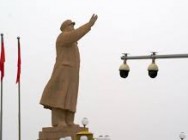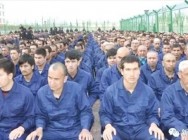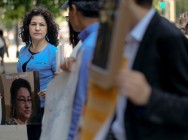Last Minute

- Conflict and Alliance: The US and China: A Centennial Dance: A Century of Relationship from 1900 to 2024
- CHINA RELATIONSEAST TURKESTAN PROBLEM AND TURKEY
- FRONTLINE China Undercover
- Elimination of “Uyghur Counter-Revolutionary Officials” in Academic Fields—Exact Quotes Translated from a Mandarin Audio File
- In Push for Trade Deal, Trump Administration Shelves Sanctions Over China’s Crackdown on Uighurs
- Dalai Lama’s 60th Anniversary Symposium: İlshat Hassan speech in English and Chinese
- Uyghur Detainees from Xinjiang ‘Placed in Nearly Every Prison’ in Shandong Province
- Shahrezad Ghayrat, Unrepresented Women
- Uighur Americans Speak Against China’s Internment Camps. Their Relatives Disappear.
- Rozinisa: The true story of the Uyghur girls in the prison

-

Conflict and Alliance: The US and China: A Centennial Dance: A Century of Relationship from 1900 to 2024
-

CHINA RELATIONSEAST TURKESTAN PROBLEM AND TURKEY
-

FRONTLINE China Undercover
-

Elimination of “Uyghur Counter-Revolutionary Officials” in Academic Fields—Exact Quotes Translated from a Mandarin Audio File
-

In Push for Trade Deal, Trump Administration Shelves Sanctions Over China’s Crackdown on Uighurs
-

Dalai Lama’s 60th Anniversary Symposium: İlshat Hassan speech in English and Chinese
5 questions on Xinjiang separatists, Uighurs and the knife attacks at Chinese train station
BEIJING — The pictures were harrowing — bloody corpses sprawled on the floor of a train station.
Chinese state media’s descriptions of the attack were equally shocking: a group of knife-wielding assailants had burst into the station in southern China on Saturday night and slashed to death at least 29 people.
You don’t often hear about terrorist attacks like this in China, a one-party Communist state.
The government-run Xinhua News Agency described the Kunming train station assault as a “premeditated violent terrorist attack” and identified the perpetrators as separatists from China’s restive Xinjiang region.
For readers seeking to understand one of the thorniest challenges facing China’s leaders, here’s some background on the problems in Xinjiang:
1. What is Xinjiang?
Xinjiang is a region on the westernmost edge of northern China. It is home to an ethnic Muslim minority called Uighurs (also spelled Uyghurs), a Turkic-speaking people who have long chafed under Chinese rule and have protested the steady influx of ethnic Chinese into the region. Over the course of centuries, the Xinjiang region has been part of many different — and, at times, competing — empires. It has been under Communist rule since the party took control of China in 1949.
For years, many Uighurs and other smaller Muslim minorities in Xinjiang have agitated against China’s authoritarian government. Their protests are a reaction, Uighur groups say, to oppressive official policies, religious restrictions and widespread discrimination.
The Chinese government has long denied any oppression of Uighurs or any other ethnic group.
2. What do Uighurs in Xinjiang want?
You can’t lump all Uighurs together. Different factions want different things — from more equitable treatment to outright secession from China. Many complaints have to do with China’s religious restrictions.
Just as Chinese leaders try to control other religions, including Catholicism and evangelical Christianity, they have issued strict policies for Muslim Uighurs. They must use a state-approved Koran. Mosques are managed by the government. And Uighur men who want government jobs have been forced to shave their beards; women are forbidden to wear head scarves.
Separatists who seek full independence from China call the Xinjiang region “East Turkestan” and want the right to govern themselves.
Human rights groups have been fairly critical of China’s treatment of Uighurs. One of the most egregious examples they cite occurred just weeks ago, when authorities seized a prominent Uighur scholar named Ilham Tohti at his home without explanation.
3. Who are Uighurs, and why does the name sound familiar?
Readers who closely followed the debate over detainees held by the United States at Guantanamo Bay, Cuba, may recall a group of Uighurs who were essentially stranded there for more than a decade, after the U.S. military determined they had no ties to al-Qaeda or the Taliban.
The U.S. government didn’t want to send the Uighurs, who had been captured in Pakistan, back to China because of fears that the Chinese government would persecute them. When U.S. officials tried to transfer them to other countries, China warned the nations not to accept them. Finally, in December, the last three Uighurs were released from Guantanamo to Slovakia. Files released by the group WikiLeaks say the former prisoners were “probable” members of the East Turkestan Islamic Movement, a separatist group that Chinese authorities blame for several attacks in recent years.
Readers in Washington may also remember reports about “the mother of the Uighur movement,” Rebiya Kadeer, a Northern Virginia resident and president of the exile group World Uyghur Congress.
4. How serious is the Uighur-
Chinese conflict?
The violence has been bad for a while. What’s different now is the emergence of targeted terrorist strikes.
Ethnic rioting and clashes in Xinjiang reached a peak in 2009, causing roughly 200 deaths and triggering a crackdown by local authorities. Renewed protests last year also turned violent and are thought to have claimed more than 100 lives.
To Chinese, the most shocking attack blamed on Uighurs occurred in October when a jeep veered into a crowd in Beijing’s Tiananmen Square, then crashed and burst into flames, killing five people. Almost immediately, authorities declared it the work of terrorists from Xinjiang, and within 10 hours of the crash, authorities said they had arrested five suspects who were in possession of long knives and flags calling for “jihad.”
5. How have Uighurs responded to these attacks?
While some Uighur leaders have condemned the attacks, they have also expressed skepticism about the government’s version of events.
“There is no legitimate reason to attack civilians. We express our condolences to the family members of the dead,” Dilshat Rexit, a spokesman for the World Uyghur Congress, said Sunday. But, he added, “China has to deal with the incident transparently; it cannot serve as a new political excuse for further clamping down on Uighurs, serious discrimination and repressing policies.”
After the Tiananmen Square crash, Kadeer issued this statement: “The Chinese government will not hesitate to concoct a version of the incident in Beijing, so as to further impose repressive measures on the Uighur people.”
Critics accuse the government of using the threat of separatists to justify their heavy-handed security and policies in Xinjiang and fear that the recent incidents will result in tougher crackdowns.
http://www.washingtonpost.com/world/5-questions-on-xinjiang-separatists-uighurs-and-their-knife-attacks-at-chinese-train-station/2014/03/02/bebd033e-a210-11e3-84d4-e59b1709222c_story.html
RELATED NEWS











